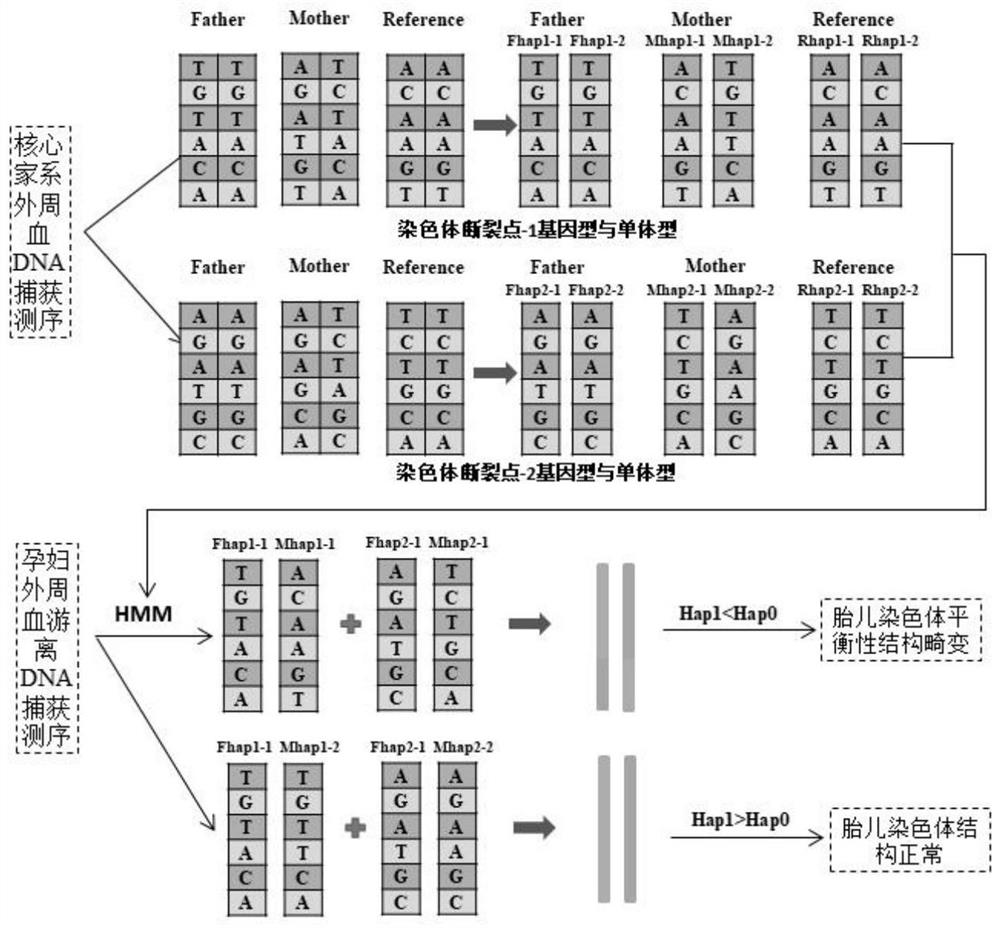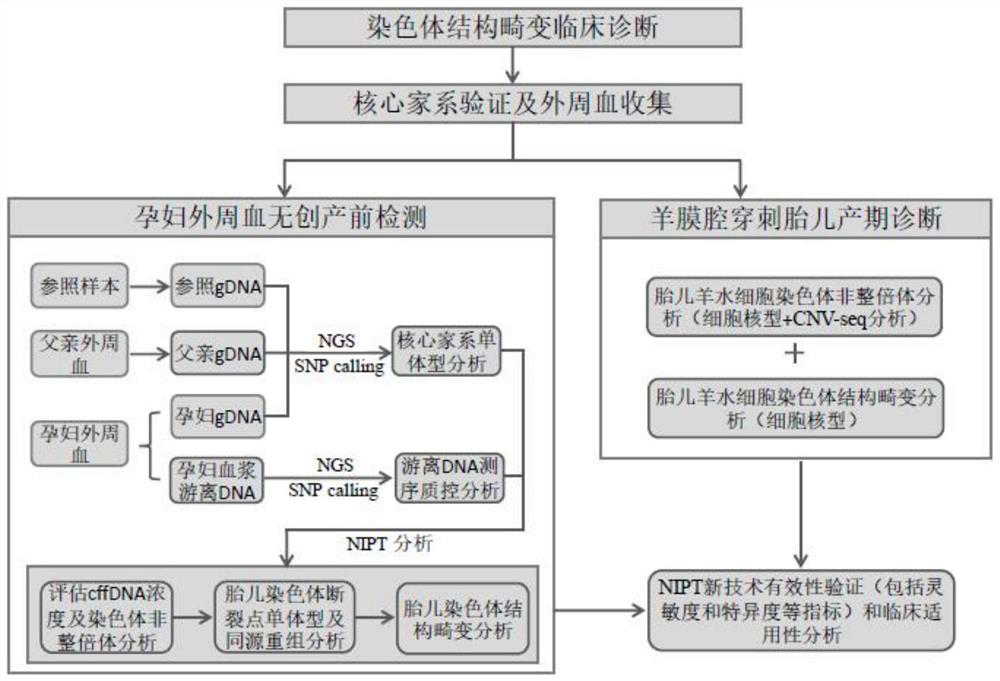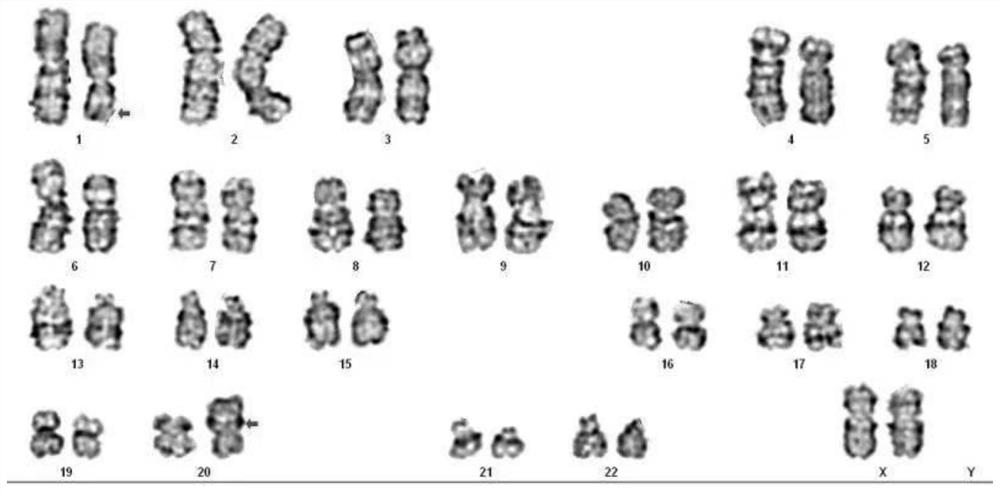Method for detecting balance structure variation of fetal chromosome through free DNA of peripheral blood of pregnant woman
A chromosome and fetal technology, applied in the field of genetic diagnosis of chromosome variation, can solve problems such as no detection of NIPT technology
- Summary
- Abstract
- Description
- Claims
- Application Information
AI Technical Summary
Problems solved by technology
Method used
Image
Examples
Embodiment 1
[0111] Example 1: Collection of both spouses and reference samples of chromosomal structural variation carriers
[0112] 6 couples carrying chromosomal structural variants, including balanced chromosomal translocation and chromosomal inversion, were recruited from Jiai Reproductive Center of Obstetrics and Gynecology Hospital Affiliated to Fudan University. Ethics committee approval.
[0113] All couples have a history of recurrent spontaneous abortion or chromosomal abnormalities. One of the couples carrying balanced chromosome translocations or inversions is referred to as "patient" and the other as "patient's spouse" in the following text. At the same time of recruitment, draw about 10ml of peripheral blood from each patient couple and relatives of patients (parents and children of patients are preferred, other relatives are also acceptable). A part of the peripheral blood was used for lymphocyte culture and karyotype analysis; the other part of the peripheral blood was ex...
Embodiment 2
[0134] Example 2: Construction of the haplotypes of the husband and wife and the fetus
[0135] 1. Genomic DNA extraction from peripheral blood
[0136] Preliminary preparations: 1.5ml EP tube, water bath, centrifuge, shaker and other consumables, well marked, protease provided in the kit, AW1 and AW2 add corresponding volume of absolute ethanol before use. If BufferAL precipitates, warm at 56°C and shake gently to dissolve. Before using BufferAW1 and BufferAW2 for the first time, you need to add the corresponding volume of absolute ethanol according to the label on the reagent bottle to make it a working solution. Turn on the water bath and set at 56 °C.
[0137] The experimental steps are as follows:
[0138] (1) Add proteinase K 20μl, anticoagulant blood 200μl, buffer AL 200μl, vortex and incubate at 56°C for 10 minutes.
[0139] (2) Add 200 μl of absolute ethanol, vortex and mix to make a homogeneous solution.
[0140] (3) Transfer the mixed solution to the DNeasy Min...
Embodiment 3
[0157] Example 3: Screening of Fetal Chromosomal Structural Variations
[0158] According to the haplotype of the fetus, the karyotype of the fetus is predicted. The prediction principles are:
[0159] When the relatives of the carrier who carry the chromosomal rearrangement are used as the reference sample:
[0160] a. If there is no recombination in the breakpoint region of fetal chromosomal structure rearrangement
[0161] When the haplotype information of the fetal chromosomal structure rearrangement breakpoint region is consistent with the haplotype information of the reference sample, it is diagnosed as a chromosomal rearrangement carrier fetus; when they are inconsistent, it is diagnosed as a non-chromosomal structure rearrangement carrier fetus, that is, Chromosomally normal fetus.
[0162] b. If homologous recombination occurs in the region of the fetal chromosome breakpoint, the judgment standard is the opposite of a.
[0163] Table 3 shows the prediction results...
PUM
 Login to View More
Login to View More Abstract
Description
Claims
Application Information
 Login to View More
Login to View More - R&D
- Intellectual Property
- Life Sciences
- Materials
- Tech Scout
- Unparalleled Data Quality
- Higher Quality Content
- 60% Fewer Hallucinations
Browse by: Latest US Patents, China's latest patents, Technical Efficacy Thesaurus, Application Domain, Technology Topic, Popular Technical Reports.
© 2025 PatSnap. All rights reserved.Legal|Privacy policy|Modern Slavery Act Transparency Statement|Sitemap|About US| Contact US: help@patsnap.com



